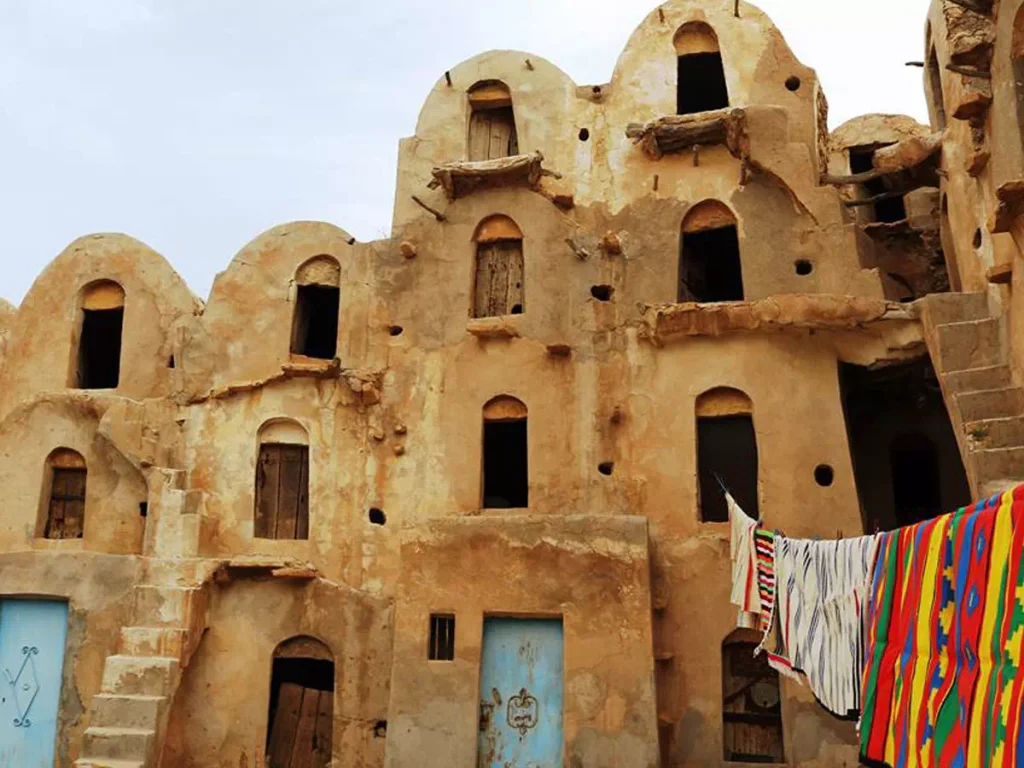Ksar Ezzahra is a remarkable oasis of history and culture. Nestled in southwestern Tunisia, precisely in in the captivating region of Tataouine. This ancient ksar, a granary fortress, beckons travelers with its mystique, inviting them to delve into its architectural wonders and rich heritage. Adorned with a striking façade, the ksar stands as a stark contrast against the vast desert landscape, igniting curiosity..
Explore the Enigmatic Beauty of Ksar Ezzahra: A Glimpse into Tunisia’s Heritage
Step inside, and time rewinds. Labyrinthine passageways, adorned courtyards, and vibrant rooms, featuring intricate tiles and carvings, transport visitors to a bygone era. Ksar Ezzahra, once a hub for storing grains and treasures, offered refuge to local communities amidst the arid conditions. Today, this cultural treasure unveils Tunisia’s history, immersing guests in the traditions of the Berber people who once inhabited it.
Embarking on a journey through Ksar Ezzahra is a passage back in time, a tribute to the resilience and brilliance of those who crafted this desert oasis. This legacy remains preserved for generations to come.
Hidden Gem: Ksar Ezzahra in Tataouine
Tucked away in southern Tunisia, Ksar Ezzahra is a hidden gem nestled amidst the village’s heart. Built around two courtyards, this unique ksar retains its role as a vibrant community hub. Catch the elders engrossed in a game of Kharbga while children return from school, infusing life into its historic walls.
At its core are ghorfas, semi-cylindrical rooms opening to the courtyard. These rooms, measuring 4 to 5m in depth and up to 2m in height and width, sometimes connect to neighboring ghorfas. Intricate inscriptions and decorations grace the ceilings, while ventilation is facilitated by perforated holes on the walls.
The ksar’s split into two parts: an older square-shaped section and a newer rectangular part known as Ksar Jedid, connected by a covered entrance (skifa). Ghorfas are abundant, numbering from 270 to 415, rising three to four floors high.
Despite its antiquity, the ksar has undergone restoration. While some ghorfas in the newer section remain in use for storage and small businesses, the old ghorfas stand unused, devoid of doors. Ascend to the upper ghorfas using a rustic staircase crafted from olive wood bars.

Comment (0)